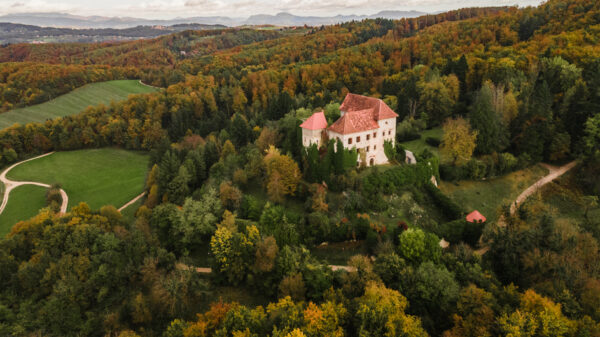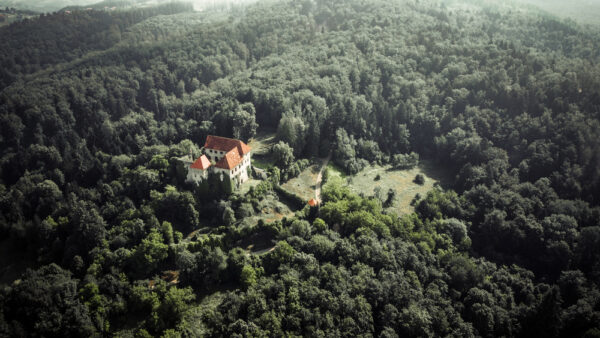Hmeljnik Castle
Hmeljnik Castle, boasting a long and fascinating history, is among the oldest castles in Slovenia. Built in the 12th century and first mentioned in written records in 1217, it is said to have gotten its name from the hops that once grew abundantly in the surrounding area. Perched on a hilltop with stunning views of the Dolenjska region, the castle today endures as a ruin with the status of a cultural monument of national importance.

History and Ownership Changes
The rich history of Hmeljnik Castle is closely linked to the changes in its owners. In the Middle Ages, it was managed by the knights of Hmeljnik, who gave it the character of a feudal fortress. In the 15th century, the castle passed into the hands of the Counts of Črnomelj, further strengthening its regional significance. Later, in 1876, the castle was acquired by the Wamboldt couple, known homeopaths who treated both people and even pigs on the estate.
During World War II, the castle met a tragic fate. It was burned down by partisans in 1942, and prior to that, it was looted by locals. After the war, the ruins were mined in 1958, turning the castle irrevocably into a sad remnant of former glory. Nonetheless, the remains still testify to the castle’s rich history and past grandeur.
Architectural and Historical Significance
Hmeljnik Castle has preserved an intriguing historical complexity over the centuries. Interestingly, a 1223 document mentions the terms Hopfenbach and inferior Hopfenbach. Some interpretations suggest that there may once have been two castles with the same name, a notion supported by the writings of Janez Vajkard Valvasor. Whether these were indeed two separate castles or different parts of a single estate remains a mystery that continues to fascinate historians and heritage enthusiasts alike.




